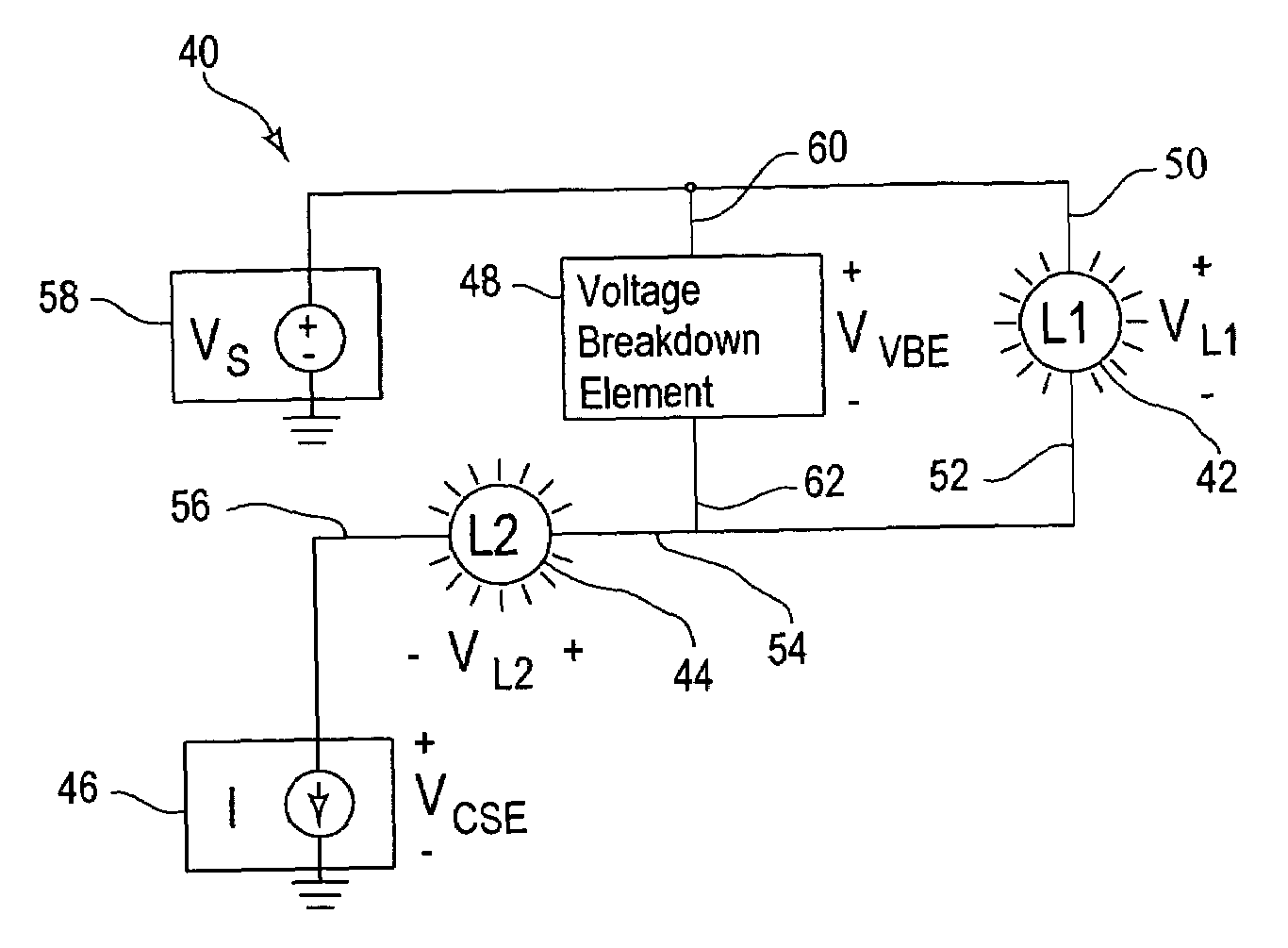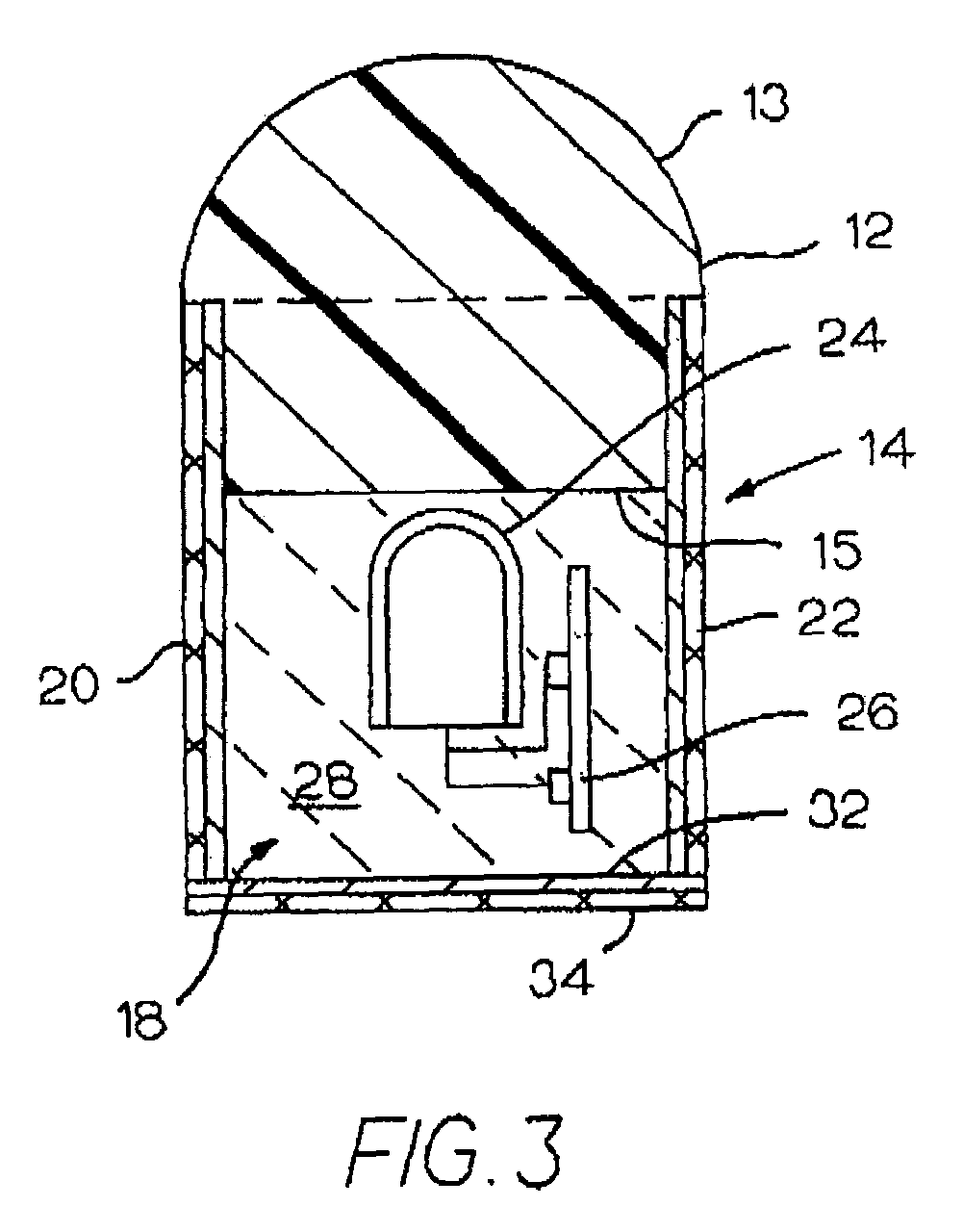Cuttable illumination device
a technology of illumination device and cutting device, which is applied in the direction of semiconductor lamp usage, display means, lighting and heating apparatus, etc., can solve the problems of difficult to overcome, difficult to initial handle, install and/or replace, and high cost of neon lighting package and ship
- Summary
- Abstract
- Description
- Claims
- Application Information
AI Technical Summary
Benefits of technology
Problems solved by technology
Method used
Image
Examples
Embodiment Construction
[0031]The present invention is a cuttable illumination device for simulating neon lighting using a string of point light sources and having a construction that allows for the cutting or trimming of the device to a desired length. The preferred illumination device uses a high-intensity, but dimensionally small, light source together with an element that acts both as an optical waveguide and light scattering member, thus permitting light to exit laterally out of its surface. As described in related U.S. Pat. No. 6,592,238, which has been incorporated in its entirety by reference, this element is referred to as a “leaky waveguide.” By placing the light source contiguous to such a leaky waveguide in a specific manner so as to cause the waveguide to uniformly glow over its lateral surface, applicants are able to obtain an illumination device that rivals or surpasses the uniform glow of neon tubing. A combination of circuit elements allows cutting or trimming of the device to a desired le...
PUM
 Login to View More
Login to View More Abstract
Description
Claims
Application Information
 Login to View More
Login to View More - R&D
- Intellectual Property
- Life Sciences
- Materials
- Tech Scout
- Unparalleled Data Quality
- Higher Quality Content
- 60% Fewer Hallucinations
Browse by: Latest US Patents, China's latest patents, Technical Efficacy Thesaurus, Application Domain, Technology Topic, Popular Technical Reports.
© 2025 PatSnap. All rights reserved.Legal|Privacy policy|Modern Slavery Act Transparency Statement|Sitemap|About US| Contact US: help@patsnap.com



